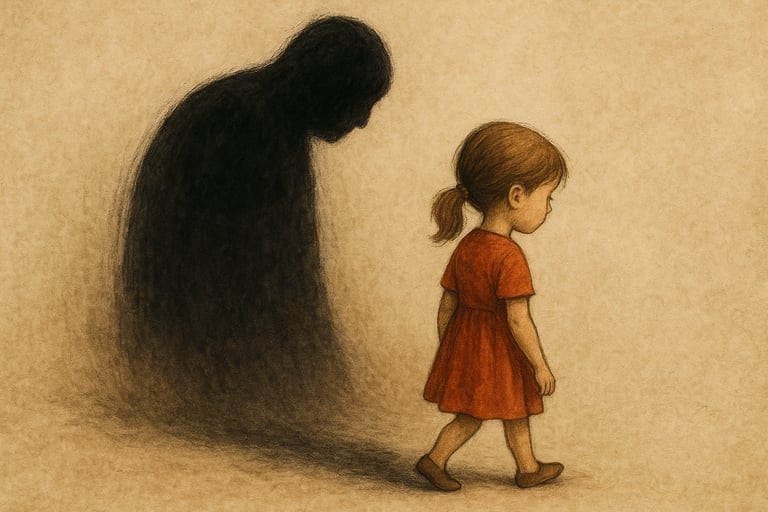The Hidden Language of Trauma: What It Really Is and Isn’t
Discover the true meaning of trauma beyond stereotypes. Understand how trauma hides in everyday experiences and why recognizing it is the first step to healing.
TRAUMA & HEALING
Ashik Zaman
7/25/20252 min read


Trauma. A word often reserved for war veterans, abuse survivors, or tragic accidents. But what if trauma is far more common, far more invisible, and far more misunderstood than we think?
In this first part of our Trauma and Healing blog series, we break down what trauma truly is, how it hides in our bodies and behaviors, and why identifying it—even the subtle kind—is the foundation of healing.
The Nervous System’s Role in Trauma
Your body doesn’t just remember trauma – it stores it. According to polyvagal theory, the nervous system constantly scans the environment for danger. When overwhelmed, it activates survival responses:
Fight: Anger, aggression, controlling behavior
Flight: Perfectionism, overworking, anxiety
Freeze: Numbness, dissociation, lack of motivation
Fawn: People-pleasing, losing sense of self to maintain peace
If you’ve ever felt stuck in any of these patterns for years, you might not be broken. You might be traumatized.
Signs You May Be Carrying Trauma Without Realizing It
Trauma doesn’t always scream. Sometimes it whispers through:
Chronic fatigue or insomnia
Constant overthinking or hypervigilance
Emotional numbness
Fear of abandonment or rejection
Difficulty trusting others
Explosive reactions to small triggers
Many of these symptoms become "normal" over time, which is why so many people suffer silently.
Why Naming It Matters
Unrecognized trauma festers. But naming it begins the healing. The moment you stop gaslighting yourself and say, "This hurt me more than I allowed myself to admit," you create space for compassion and recovery.
Validation is the medicine most trauma never received.
Common Myths to Unlearn
“Others had it worse, so mine doesn’t count.” → Trauma is personal, not comparative.
“If I don’t remember it clearly, it didn’t affect me.” → The body remembers what the mind forgets.
“I should be over this by now.” → Healing isn’t linear.
What Is Trauma, Really?
At its core, trauma is not the event itself, but your nervous system’s response to it. It is the overwhelm that follows an experience you were not emotionally equipped to handle. Bessel van der Kolk, author of The Body Keeps the Score, defines trauma as the residue of fear, helplessness, and loss of control that gets stuck in the mind and body.
There are two general types:
Big T Trauma: Obvious life-shattering events like war, sexual abuse, or natural disasters.
Little t trauma: Subtle emotional wounds like chronic criticism, childhood neglect, rejection, or sudden breakups. These are often minimized but can be just as damaging.
Trauma is not a label. It’s a lens through which your reactions, fears, and patterns begin to make sense. Recognizing it doesn’t mean you’re weak—it means you're finally safe enough to feel.
In the next part of this series, we’ll explore how emotional trauma shows up in the body as fatigue, illness, or burnout—and what science reveals about reconnecting with your energy and self.
Stay with us. You deserve healing.
References & Further Reading:
Van der Kolk, Bessel. The Body Keeps the Score: Brain, Mind, and Body in the Healing of Trauma. Penguin Books, 2015.
Levine, Peter A. Waking the Tiger: Healing Trauma. North Atlantic Books, 1997.
Maté, Gabor. When the Body Says No: The Cost of Hidden Stress. Vintage Canada, 2011.
Perry, Bruce D. & Winfrey, Oprah. What Happened to You? Conversations on Trauma, Resilience, and Healing. Flatiron Books, 2021.
Walker, Pete. Complex PTSD: From Surviving to Thriving. Azure Coyote Books, 2013.

